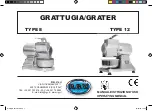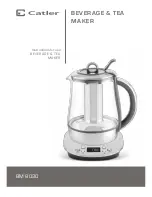
16
Tips
SLOW COOKING
• Choose from MANUAL, MEAL TIMER, or PROGRAM modes. See pages 10–15 for
complete descriptions.
• The High temperature setting is best for foods that require high heat and don’t tend to
overcook, such as potatoes, beans, casseroles, chili, soups, and when “baking” in one of
the slow cook modes. It is a good choice when you don’t have time for a long, slow cook
time. 1 hour on High is equivalent to 1 1/2–2 hours on Low.
• The Medium temperature setting is a good choice for chicken, lean cuts of pork, and foods
that risk overcooking or drying out.
• The Low temperature setting is best for large or tough cuts of meat that require a long,
slow cook time and occasions when you need to leave a recipe cooking for a long period
of time, such as overnight or during a workday.
• The Warm temperature setting is not intended for cooking food. It should only be used for
keeping cooked food warm.
• The vessel should be at least half-filled for best results. If less than half-filled, check for
doneness 1 to 2 hours earlier than recipe indicates.
• Thaw any meat or poultry before slow cooking.
• Do not slow cook without some liquid in the vessel. At least 1 inch (2.5 cm) of liquid at the
bottom
of the vessel is recommended.
• When cooking meat, the higher the fat content, the less liquid is needed. To decrease the
amount of excess fat in a recipe, trim as much visible fat as possible and remove skin from
poultry.
• Very little liquid evaporates from a recipe when slow cooking. When making your favorite
soup or sauce, reduce the liquid called for in the recipe by a half to a full cup (118–237 ml).
If recipe is too thick, liquid can be added later.
• Root vegetables such as potatoes and carrots should be cut into pieces no larger than
2 inches (5.1 cm) to ensure complete cooking.
• Some foods are not suited for extended slow cooking. Pasta, seafood, milk, cream, or sour
cream should be added no more than 2 hours before serving.
• Stirring is usually not necessary when slow cooking. Removing the lid results in heat loss
and extends the cooking time. When cooking a recipe on High, some occasional stirring
may be recommended.
• Visit
www.foodsafety.gov
for more information on safe internal cooking temperatures.
USING COOKING MODES
Summary of Contents for WGSC100S
Page 82: ...82 NOTAS...
















































